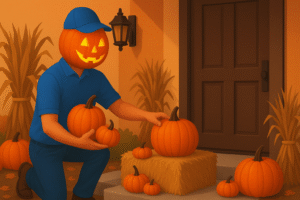
Woodstock, the iconic yellow bird and Snoopy’s loyal sidekick in the “Peanuts” comic strip, is one of the most beloved characters created by Charles M. Schulz. Despite his distinctive look, Woodstock’s species is never explicitly identified within the strip, adding an element of clever ambiguity to his character. Over the years, fans and scholars have speculated on what kind of bird he might be, but Woodstock remains in a category all his own—one that’s less about ornithological accuracy and more about whimsical charm.
Origins and History of Woodstock
Woodstock made his first appearance in the “Peanuts” universe in 1966, though he wasn’t officially named until 1970. In his initial introduction, he was just a nameless little bird who often fluttered around Snoopy’s doghouse, chirping and occasionally getting caught up in comical situations. His early interactions with Snoopy established their unique dynamic: a friendship marked by loyalty, miscommunication, and shared adventures.
The name “Woodstock” was given to the character four years after his debut, inspired by the famous Woodstock Music and Art Fair of 1969—a three-day music festival that came to symbolize the 1960s counterculture and the hippie movement. Schulz named the bird after the festival, drawing on its cultural significance and the association with peace, love, and camaraderie. This naming coincided with the bird’s increased presence in the strip, solidifying his role as Snoopy’s best friend and confidant.
Woodstock’s Relationship with Snoopy
One of the most endearing aspects of Woodstock’s character is his relationship with Snoopy. The two share a deep bond, often communicating in their own unique language of chirps and thought bubbles. Snoopy, with his wild imagination and frequent flights of fancy, sometimes takes on roles like “World War I Flying Ace” or “Joe Cool,” while Woodstock often finds himself as a trusty sidekick—sometimes reluctant, but always loyal.
Woodstock’s tiny stature, coupled with his constant struggles to stay airborne, makes him a humorous counterpart to Snoopy’s larger-than-life persona. He is often depicted as clumsy and somewhat inept at flying, which adds to his endearing appeal. Despite these quirks, Woodstock shows immense courage and determination, proving that size doesn’t limit his spirit.
What Kind of Bird is Woodstock?
The question of what kind of bird Woodstock is has intrigued fans for decades. Given his small, round body, wispy feathers, and limited flying abilities, many have speculated that he could be a canary, a goldfinch, or even a stylized representation of a chick. However, Schulz himself never definitively identified Woodstock’s species. In one comic strip, Snoopy is shown consulting a birdwatcher’s guide, only to find Woodstock’s picture under the heading “Completely Unidentifiable Birds,” underscoring the jovial mystery surrounding his identity.
Some clues about Woodstock’s bird status can be gleaned from his behaviors. He builds nests, interacts with other birds, and flies in erratic patterns, suggesting that he’s a species of small songbird. His distinctive, almost abstract appearance was likely a result of Schulz’s minimalist drawing style, which focused more on personality and expression than on anatomical accuracy.
Impression
Woodstock’s character quickly grew in popularity after he was named, becoming a prominent figure in both the “Peanuts” comic strip and its animated specials. His bright yellow color and diminutive form made him instantly recognizable, and his devoted friendship with Snoopy provided a humorous and heartwarming dynamic that resonated with readers and viewers alike.
Woodstock has appeared in numerous “Peanuts” TV specials and films, such as “A Charlie Brown Thanksgiving” and “It’s the Easter Beagle, Charlie Brown”. In these adaptations, his interactions with Snoopy are often played for comedic effect, but they also reveal the depth of their companionship. Woodstock’s chirping, usually represented in dialogue bubbles as vertical hash marks, is translated into a series of whimsical tweets and squeaks in the animated versions, adding to his charm.
Woodstock’s name and appearance carry symbolic weight, reflecting the era in which he was named. The late 1960s and early 1970s were a time of social change, and the Woodstock festival became emblematic of a generation seeking peace, unity, and creative expression. By naming his bird character after the festival, Schulz tapped into this cultural zeitgeist, imbuing Woodstock with a sense of optimism and lightheartedness.
In the context of the “Peanuts” strip, Woodstock’s presence often provided comic relief, but he also represented perseverance and friendship. His relationship with Snoopy was one of mutual support—Woodstock was always there to accompany Snoopy on his imaginary adventures, and Snoopy, in turn, offered guidance and companionship to his feathered friend.
Woodstock in Popular Culture
Woodstock’s influence extends far beyond the comic strip. He has become a symbol of the “Peanuts” brand, appearing on merchandise ranging from clothing and accessories to toys and home décor. His silhouette is instantly recognizable, and his image has been used in various promotional campaigns and collaborations.
Woodstock’s legacy is one of joy, whimsy, and the enduring power of friendship. Despite his small stature, he stands tall as a beloved character whose personality transcends the panels of the comic strip. For fans of “Peanuts”, Woodstock is more than just a bird—he’s an icon of resilience and loyalty, proving that even the smallest characters can have a big impact.
No comments yet.








